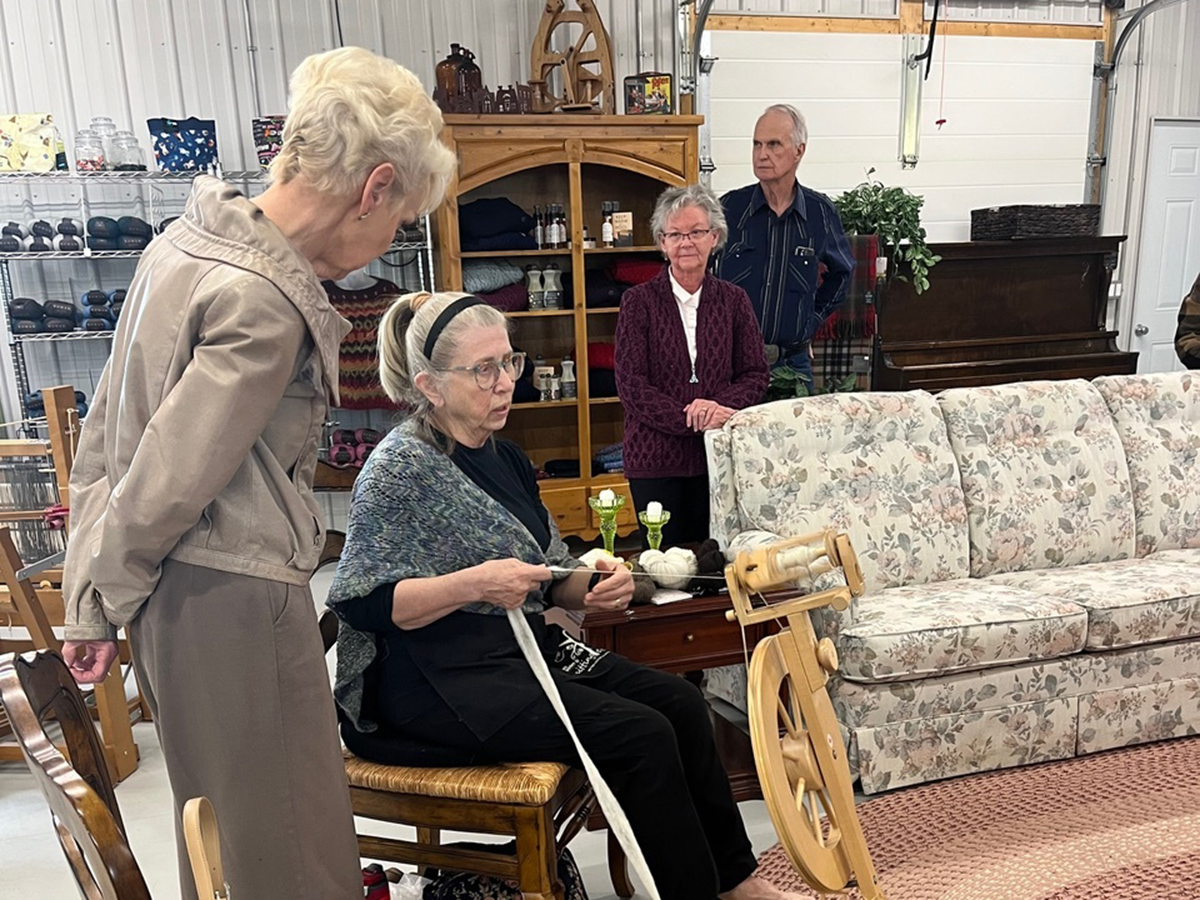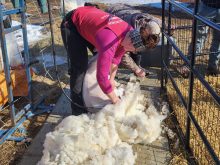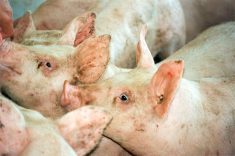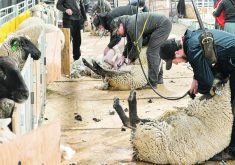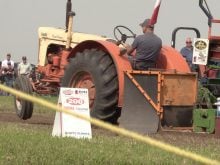CARON, Sask. — Karen Smith has been surrounded by wool all her life.
Her grandmother ran a wool shop and taught her to knit at age seven. Her grandfather worked for the Canadian Co-operative Wool Growers in Ontario.
She and her husband, Howard, raised sheep for decades and operate a transport company that moves sheep and wool across Canada. They are both accredited wool judges.
Read Also
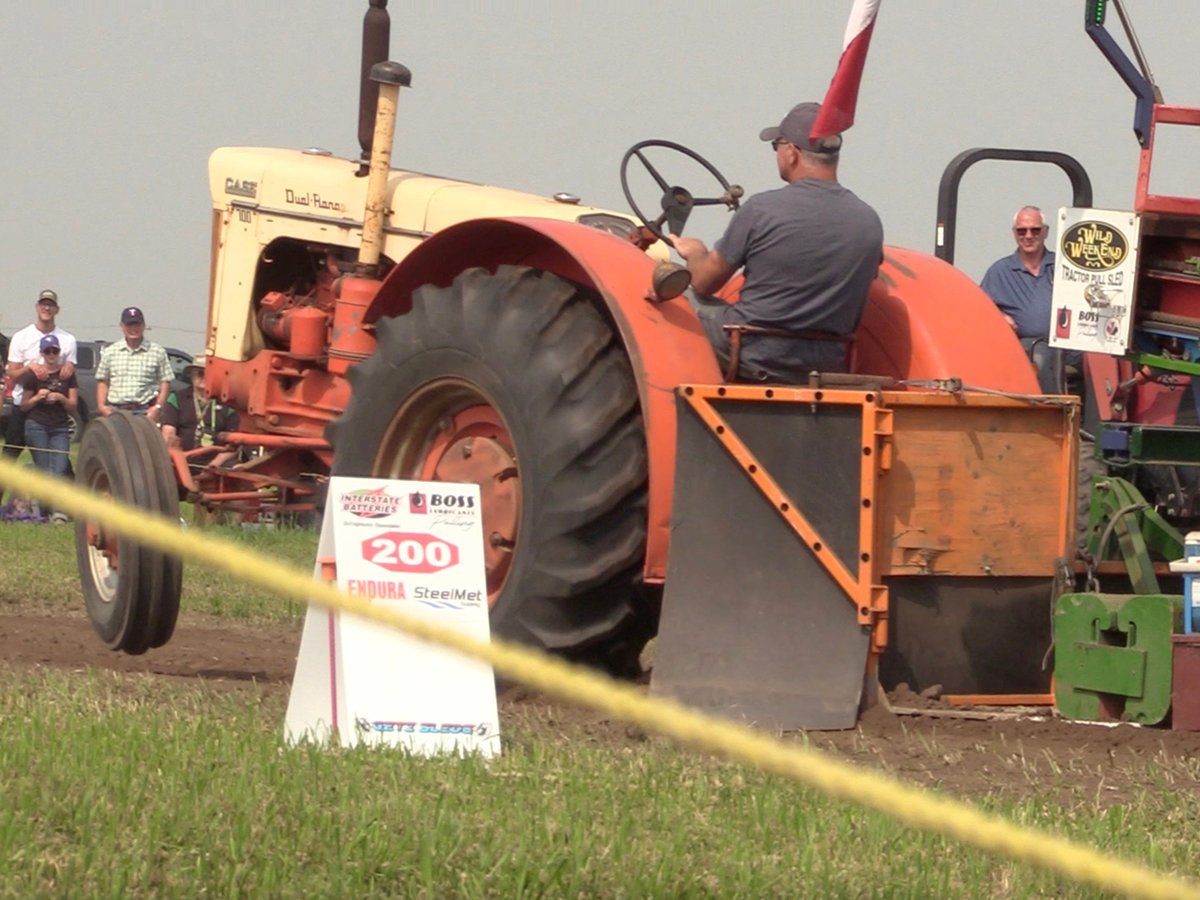
Vintage power on display at Saskatchewan tractor pull
At the Ag in Motion farm show held earlier this year near Langham, Sask., a vintage tractor pull event drew pretty significant crowds of show goers, who were mostly farmers.
“It just seemed like a natural fit to us to have a wool mill,” she said.
Canadian Fibre Mill is located on their farm south of Caron. The Smiths purchased a mill from Belfast Mini Mills in Prince Edward Island in 2018. They’ve since added on to the building to provide space for retail display and to offer classes in fibre-related pursuits such as knitting, spinning and weaving.
Their business was just nicely getting started when the COVID-19 pandemic hit, and it’s only within the last year or so that Smith is seeing the results of a lot of work and investment.
The retail space is open, classes are set to resume in fall and recently the couple hosted visitors with royal connections.
Lt.-Gov. Bernadette McIntyre, her husband, Rich, and staff toured the mill on May 1. The king’s representative in Saskatchewan saw how fleece from animals across the country is processed, spun and dyed to become yarn, and she tried out a weaving loom.
McIntyre, originally from Bethune, Sask., was appointed the vice-regal representative in January and learned of King Charles’ Campaign for Wool. That resulted in the visit to the Smiths’ mill.
The king started the campaign in 2010 to raise awareness about the natural and sustainable qualities of wool and remains a patron of the initiative. It now operates in numerous countries and kicked off in Canada in 2014.
Smith is working with the campaign to start programs in Saskatchewan. But in the meantime, McIntyre was going to meet King Charles, and the campaign asked if a wool gift could be sent with her.
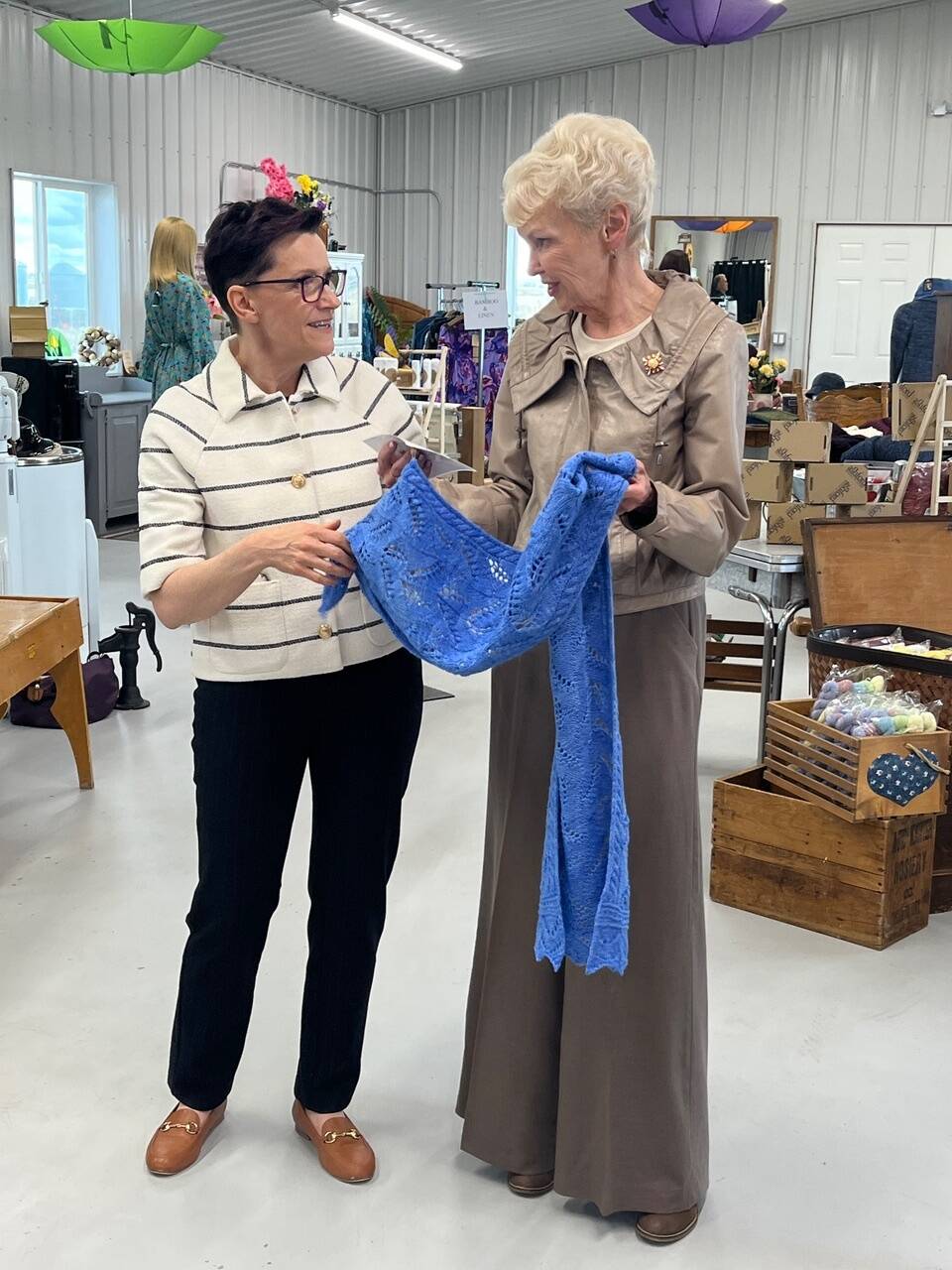
Smith asked master knitter Mariette Anderson from Gravelbourg, Sask., if she could make something with wool from the mill.
Anderson designed and knit a green scarf for King Charles and a blue one for Queen Camilla. The scarves incorporate themes of agriculture, forestry and rural life.
“The cable pattern symbolizes the diverse threads of the province, intertwining north and south, rural and urban areas, forestry and agriculture, as well as First Nations and people from various cultures, into a unified design,” Anderson wrote on a card to go with the king’s scarf.
“On the back, a flowing stitch pattern pays tribute to fields of wheat swaying in the wind — a familiar and iconic image of the prairie.”
The queen’s scarf was knit in blue merino to represent Saskatchewan skies and represents femininity and strength, Anderson said.
“Delicate lace motifs weave through the fabric, emulating strands of wheat and paying homage to the province’s humble agricultural roots,” she said.
McIntyre presented the scarves, and other Saskatchewan products, during her May 14 visit to Buckingham Palace.
Smith said the phone began ringing off the hook after that news emerged. She hopes it’s a sign that the recent renewed interest in wool continues.
The wool market dropped during COVID, she said, and there are concerns about wool going to China at lower prices.
Many producers ended up burying wool rather than worrying about selling it. Some purchased small pelleting mills and are producing wool pellets for plants and gardens.
Smith also hopes it’s a positive sign for her business.
The purchase of the mini mill came with several days of instruction from the company.
“They have a fellow that comes out and sets up the mill and then he trains you for as long as it takes,” she said.
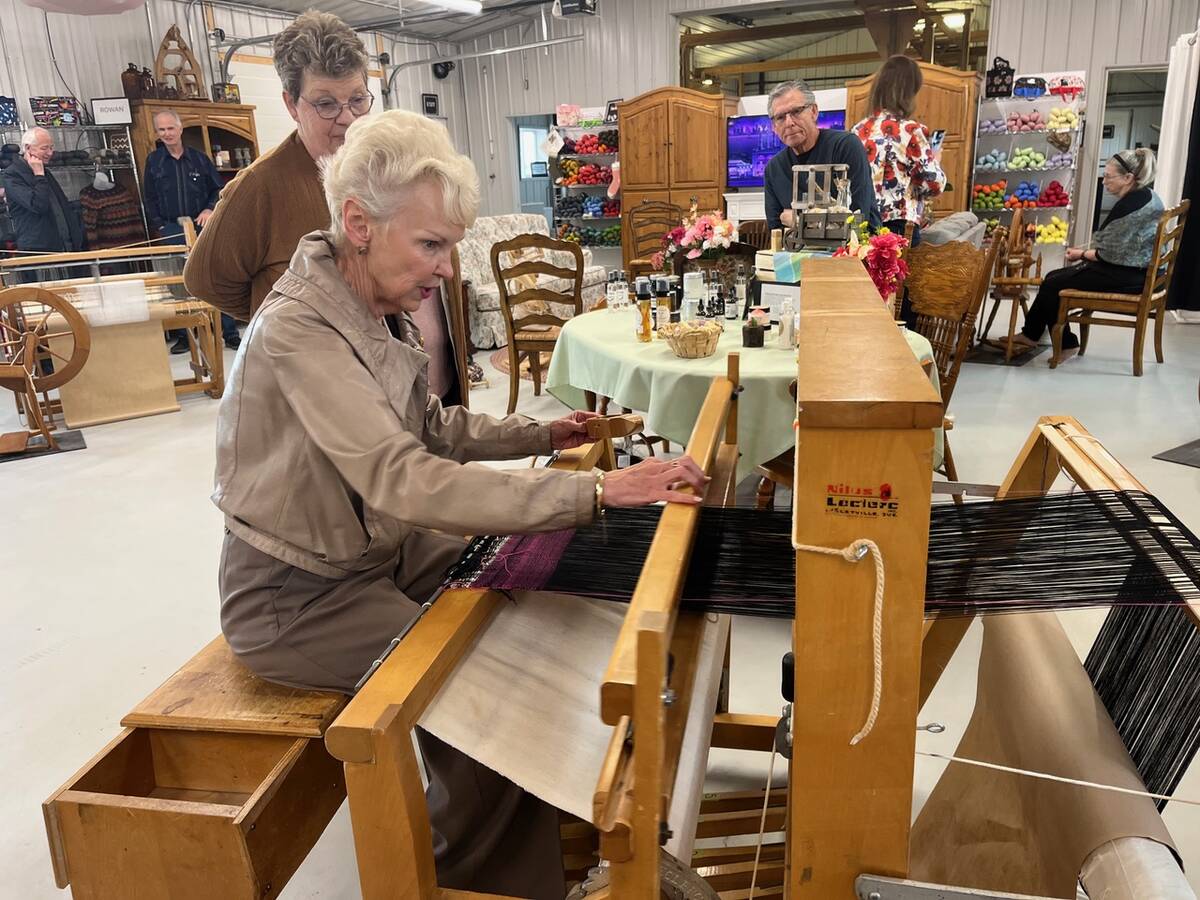
He trained her for four days, went to set up another mill and then returned for another three days.
“Different breeds require different things,” Smith said.
“It’s not a set it and forget it type of machine. It’s actually an art. You have to sort of read the wool before, and sometimes you have a lot of adjustments before it actually does what you want it to do.”
The mill has capacity of about 30 pounds of finished product daily but she is doing all the work herself compared to most places that would probably have three staff.
“I have pounds and pounds of fleece to do,” she said.
“I just bought another 1,000 lb. from a producer in the province. It’s all at different stages. You’re either washing or you’re picking or you’re putting it through the carder. Every machine is loaded most of the time and you’re just going from machine to machine making sure everything is working optimally.”
The Smiths no longer have sheep on the farm, although their nephew’s sheep next door can be seen through the mill windows. They’ve had sheep since the 1980s, as well as alpacas and angora goats, but she said it’s time to focus on the mill.




